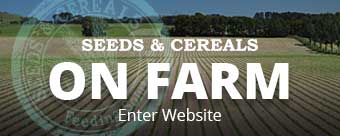Description
Arrotas Arrowleaf Clover
Trifolium vesiculosum
Arrotas is suited to + 600 mm rainfall areas, where early summer rain followed by hot summers can be expected. Arrotas is adapted to a wide range of soil types and does best on soils with pH of 5.0-7.0 with high water holding capacity but will not tolerate waterlogging.
Young plants are easy to identify as they mature. Diamond or arrowhead shaped leaves with white or green V– shaped marks characterise the variety. Each plant produces large quantities of seed in its first year, these will soften during the second year and regenerate large amounts of plants in its third. Allowing the plants to set seed in the first year will ensure a seed bank for the future. Arrotas can be incorporated into a mix with forage cereals or annual grasses to provide both winter production and weed suppression.
Features
Annual legume with an enhanced deep tap root, able to utilise subsoil moisture well into summer.
-
High proportion of hard seed for persistence
-
Increases soil Nitrogen, 1000 kg DM will fix approximately 25 kg/N for free
-
Outstanding spring and summer production,
-
Quality feed— high nutrient value and digestibility
-
Low risk of bloat or Redgut during grazing – however care should be taken when introducing stock to any legume pasture
-
10 tonne/ ha herbage DM yields produced in Marlborough exceeds sub and Balansa clover yields
Establishment and Grazing Management
-
Purchase high quality certified seed, which has been softened. Inoculation with group C innoculants is vital before sowing.
-
Successful establishment can be achieved through direct drilling. This reduces soil disturbance, which limits germination of competing weeds.
-
Sowing depth of 5mm should not be exceeded, light rolling or harrowing with chains afterwards improves seed– soil contact.
-
10– 15kg P/ha as single or triple superphosphate can be beneficial in soils with a low available P level.
-
Light grazing through winter assists controlling competition from winter active species if grown in a mix.
-
Defer grazing from beginning of flowering in first year to ensure maximum seed set, reintroduction 6 weeks after flowering and when seed heads are dry. Sheep will then carry the
seed in their gut and deposit it to other paddocks.
-
Second year pasture should be grazed normally at standard stocking rates.




